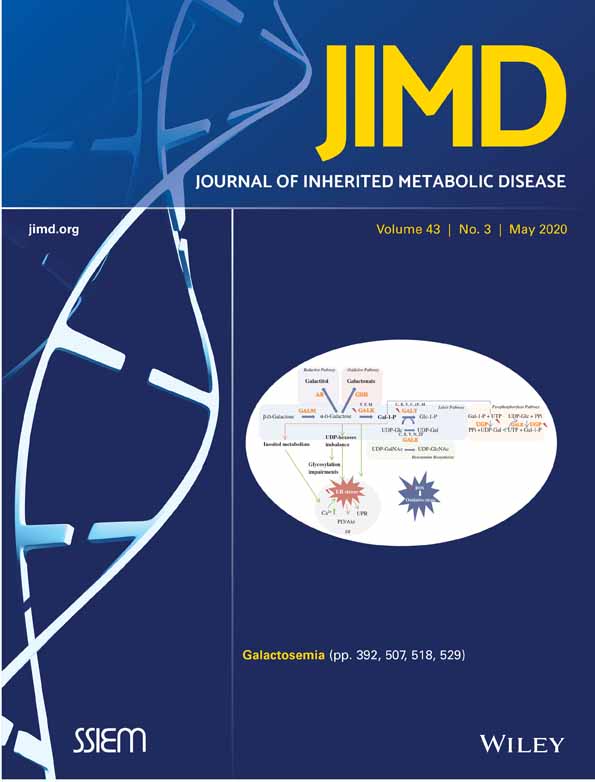A galactose-1-phosphate uridylyltransferase-null rat model of classic galactosemia mimics relevant patient outcomes and reveals tissue-specific and longitudinal differences in galactose metabolism
Funding information: National Institutes of Health, Grant/Award Numbers: R21HD092785, R01DK107900; Emory University School of Medicine (Department of Human Genetics)
Abstract
Classic galactosemia (CG) is a potentially lethal inborn error of metabolism, if untreated, that results from profound deficiency of galactose-1-phosphate uridylyltransferase (GALT), the middle enzyme of the Leloir pathway of galactose metabolism. While newborn screening and rapid dietary restriction of galactose prevent or resolve the potentially lethal acute symptoms of CG, by mid-childhood, most treated patients experience significant complications. The mechanisms underlying these long-term deficits remain unclear. Here we introduce a new GALT-null rat model of CG and demonstrate that these rats display cataracts, cognitive, motor, and growth phenotypes reminiscent of patients outcomes. We further apply the GALT-null rats to test how well blood biomarkers, typically followed in patients, reflect metabolic perturbations in other, more relevant tissues. Our results document that the relative levels of galactose metabolites seen in GALT deficiency differ widely by tissue and age, and that red blood cell Gal-1P, the marker most commonly followed in patients, shows no significant association with Gal-1P in other tissues. The work reported here establishes our outbred GALT-null rats as an effective model for at least four complications characteristic of CG, and sets the stage for future studies addressing mechanism and testing the efficacy of novel candidate interventions.
CONFLICT OF INTEREST
All of the authors declare that they have no competing interests.




